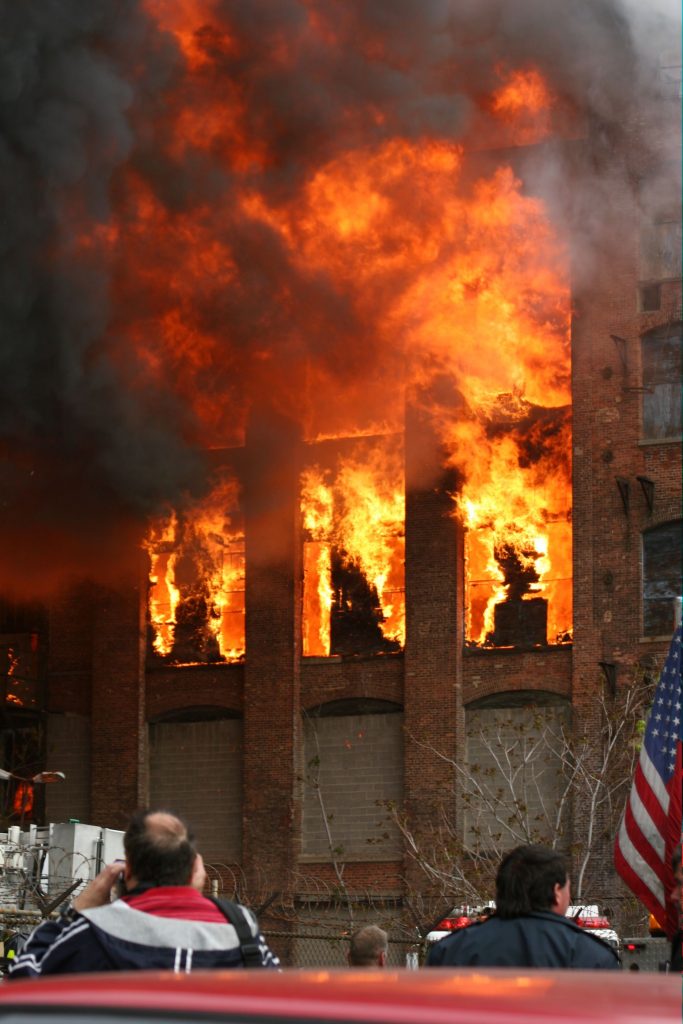
Lessons learned from fires and other tragedies often lead to changes in the model codes and standards, to help avoid similar outcomes in the future.
Photo: Kazela/Shutterstock
An understanding of the model building codes, fire codes, and referenced standards is critical to anyone specifying, supplying, installing, or maintaining doors and hardware. A lack of familiarity with the applicable requirements could result in applications which do not comply with adopted codes, and problems that can be extremely expensive to rectify.
For example, the model codes require certain doors to have panic hardware. If the specifier is not clear on where panic hardware is required and locksets are installed instead, the locksets may need to be replaced with panic hardware at a later date – possibly causing construction delays along with the high cost of replacement hardware and field modification of the door openings. If a locksmith working on a fire door is not aware of the limitations that apply to job-site preparations for hardware on fire door assemblies, the work could void the label, resulting in the need for re-certification or replacement of the modified component.
The most common model codes and standards related to door openings that are used in the United States include:
- IBC – International Building Code
- IFC – International Fire Code
- NFPA 101 – The Life Safety Code
- NFPA 80 – Standard for Fire Doors and Other Opening Protectives
- ADA Standards for Accessible Design
- ICC A117.1 – Accessible and Usable Buildings and Facilities
- BHMA – Builders Hardware Manufacturers Association Standards
Most of these codes and standards are modified on a 3-year code-development cycle, so it’s important to know which edition applies to the project in question, as the requirements may have changed from one edition to the next. The newest edition is not always the one that has been adopted in a project’s jurisdiction. States or cities may also modify the model codes and add requirements specific to buildings in that location.
The Authority Having Jurisdiction (AHJ) is defined by NFPA 101 as:
An organization, office, or individual responsible for enforcing the requirements of a code or standard, or for approving equipment, materials, an installation, or a procedure.
There is often more than one AHJ who may be responsible for a particular building, and the AHJs may be enforcing different codes and standards. Examples of AHJs include:
- Building Inspector
- Fire Marshal
- Accreditation Inspector
- Health Inspector
- Plumbing Inspector
- Electrical Inspector
- Insurance Inspector
- Other Code Officials and Inspectors
The video below includes an introduction to the codes and standards that affect door openings. After watching the video, please proceed to the review questions below.
If you’d like more information on the historic fires mentioned in the video, refer to the links below (this is optional):
- Iroquois Theater
- Triangle Shirtwaist Factory
- Cocoanut Grove Nightclub
- Our Lady of the Angels School
- Station Nightclub
~~~
Review Questions
1. Model codes and referenced standards are typically revised how often?
- Annually
- Every 2 years
- Every 3 years
- As needed
2. Which of the following statements is true?
- The building code is used during the design and construction of a building.
- The fire code is used after construction is complete, and throughout the life of the building.
- Standards referenced by the model codes typically include more detailed requirements related to a specific topic.
- All of the above
3. Which of the following authority figures would NOT typically be considered an Authority Having Jurisdiction (AHJ)?
- Fire Marshal
- Joint Commission Inspector
- School Principal
- Electrical or Plumbing Inspector
- Building Inspector
Answers: 1 – C, 2 – D, 3 – C
